
3D printing has been invented since 1983 when Charles Hull invented the stereolithography machine. He went on to start 3D Systems in 1986. Fast forward to the early 2010s, the movement for affordable 3D printing has skyrocketed due to 3D printing patents expiring and it’s still continuing today. When the Fused Deposition Modeling (FDM) printing process patent expired in 2009, it enabled a new breed of affordable 3D printers to give rise to its popularity. (Source: TechCrunch)
3D printers that used to cost more than $10,000 were now available for as low as under $1,000. The attractive price made 3D printing more accessible, which drove its use and adoption. 3D printing technology that had previously been relatively unknown had crossed over to massive appeal where even students are using it in classrooms.
The debate on whether 3D printing is hype
Depending on which side you are on, there are those who says that 3D printing is a fad that’s starting to fizzle. While on the other end of the spectrum, others believe it still needs time to realize its potential to be the next technological revolution, like computers and the Internet. Technology adoption, simply just takes time.
If you look more closely at the media attention surrounding the hype of 3D printing, it’s mainly focused on:
-
Consumer 3D printing for personal use: The vision that one day desktop 3D printers will be put into the every home like laser or inkjet printers.
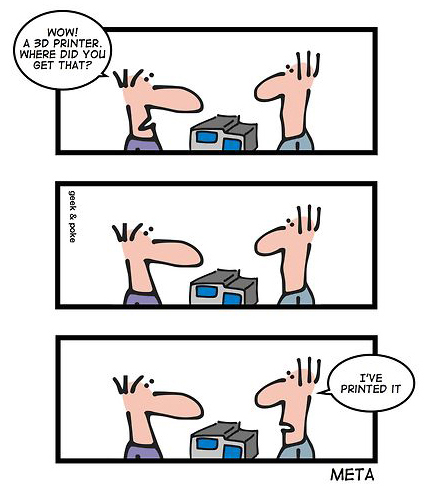
Source: geek-and-poke.com -
The Promise of the Future: 3D printing applications that still needs to prove their viability on a larger scale. We’ve heard stories that 3D printing holds the promise of ending world hunger by 3D printing food, help us with our medical needs with 3D printed organs, or putting 3D printed cars on the streets.

The first 3D printed car by Local Motors Strati roadster. Time will only tell if they will be mass adopted. Source: Popular Mechanics
Looking beyond the hype
Much of the spotlight is focused on the mass adoption of 3D printing by consumers or the potential of 3D printing. There is a lesser emphasis on discussing the positive impact 3D printing has on organizations that already adopted the technology to help them realize real benefits now.
When we break down 3D printers into different categories, the hype is usually centered on consumer 3D printers and high-end 3D printers. 3D printer prices can range from $500 to $500,000+. More expensive 3D printers typically give you better print quality, larger print volume, more selection in terms of materials you can print, and better print durability.
| Price | Description | |
|---|---|---|
| High-end 3D Printers | $$$$ | High quality 3D printing typically reserved for larger companies such as Ford, Boeing, and GE. |
| Mid-Tier 3D Printers | $$-$$$ | Typically small to medium-sized companies or organizations that use 3D printing due to its affordable price from a business perspective. |
| Consumer 3D Printers | $ | Personal use for makers and tinkerers who use 3D printing for leisure or small-scale applications. |
Let’s look beyond the hype and examine concrete examples of how 3D printing has impacted different industries now. Since high-end 3D printers are expensive and normally only attainable by larger corporations, we’ll focus on organizations that use mid-tier 3D printers that offer value–providing good quality 3D prints without breaking the bank.
Industry Applications to 3D Printing
Footwear: Feetz brings custom-fit 3D-printed shoes to customers

It’s hard to find a great pair of shoes that fit your feet well. Feetz is the first company to use 3D printers to produce custom-fitted, sustainably-made stylish shoes. Founded in 2013, the digital cobbler is on a mission to revolutionize footwear so every shoe is made custom fit using a smartphone and a 3D printer.
How it works:

The shoes aren’t a gimmick. They are meant to last. Each pair is guaranteed for 500 miles of walking. When the shoes need to be retired, customers can choose to send them back to Feetz as they are 100% recyclable and the company can ship a new pair to them.
3D printers are great for mass customization because products can be tailored to each customer at a relatively low cost. Feetz use Axiom 3D printers to produce each shoe and it’s powerful and fast enough to keep up with demand. It has the capability to manufacture shoes out of comfortable, aesthetically pleasing materials without compromising on quality.
Automotive: Saleen Automotive accelerates the product design cycle
Saleen Automotive was founded in 1984 and the name has become well-known as a manufacturer of high-performance street and track vehicles. The company has continually raised the standard for automotive design and performance engineering in both street and racing applications. Since 2013, the product design team has taken advantage of 3D printers for building large-scale prototype parts to improve their designs and to accelerate their product design cycle.
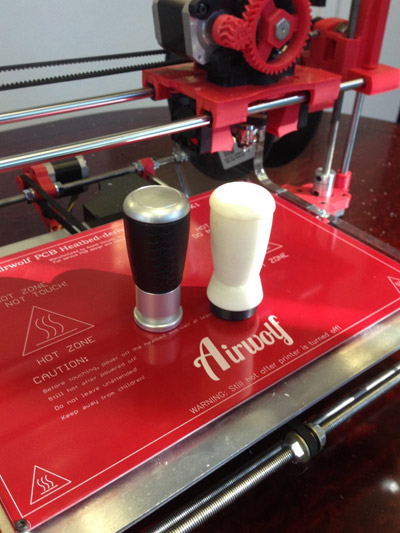
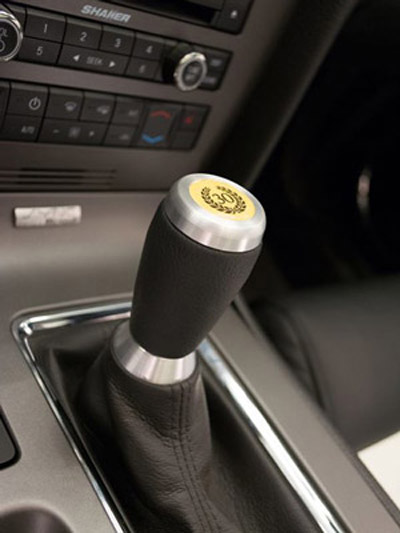
“It used to take six weeks to build prototype parts for our cars. It was a complicated process that included CAD designs, sending designs to a tool maker, having the prototype injection molded and returned to us. And if the prototype wasn’t perfect, we repeated the process until we were satisfied. With our Airwolf 3D printer, we accomplish the same thing in two days. Not only do we get parts into production faster, we can also modify and refine our designs faster.”
Sven Etzelsberger Vice President of Engineering Saleen Automotive
Saleen also use the 3D printer to manufacture small functional parts that are strong enough to go directly into their automobiles as well as developing parts including window louvers, exhaust tips, butterfly mechanisms, light bezels.
Architecture: jbA Architectural Firm Brings 2D Renderings to Life
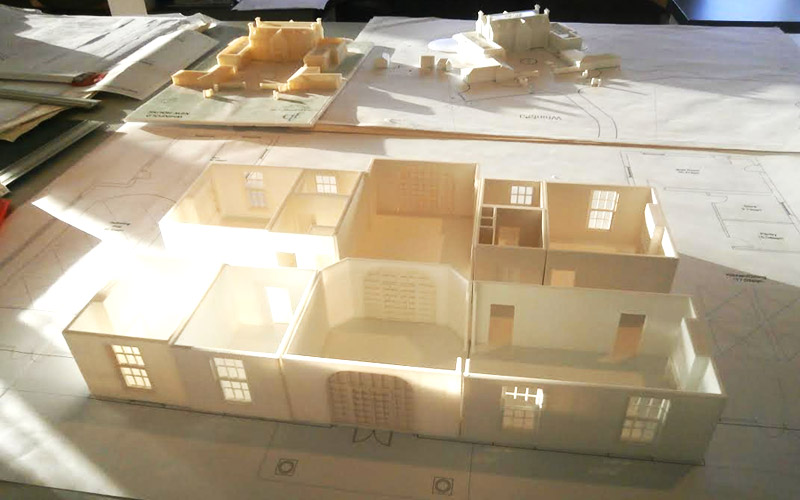
Nat Ellis, Head of Visualization from jbA, has been using a 3D printer to produce 3D renderings of all their architectural designs since 2013. Nat believes the investment into 3D printing technology provided his firm a competitive advantage over other agencies who depend on older methods of rendering.
The 3D printed models that jbA produces with a 3D printer are scaled perfectly to bring 2D blueprints to life. People have a tendency to visualize better in 3D than 2D. You can see the 3D printed model physically from different perspectives. 3D printed models are great at displaying spatial relationships and scale in ways that traditional rendering cannot.

As Ellis puts it, “It has not only helped clients get more involved with a project, but also helps give contractors on site a cleaner understanding of the end product to create a more streamlined process for all involved.”
Architects are skilled in making 3D rendering possible with CAD so it’s an easy transition to transform digital CAD drawings into 3D printed models using a 3D printer. If you are already using software such as Google Sketchup, it’s easy to use along with a 3D printer to make this happen.
Medical: 3D printing gives a helping hand
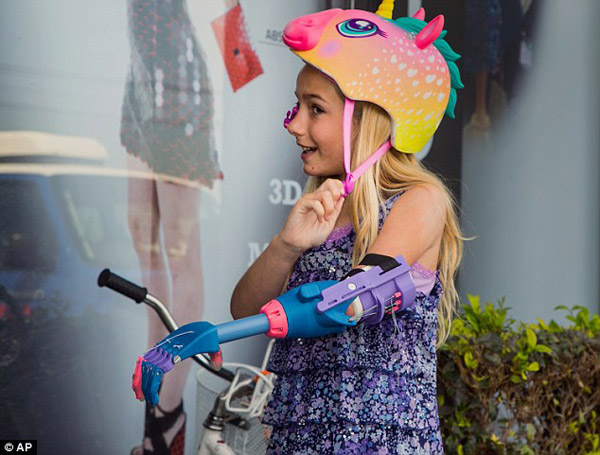
Medical applications in 3D printing transform people’s lives in such a positive way. Faith Lennox is a 7-year-old girl whose arm was amputated due to a condition called compartment syndrome she had at birth.
Faith is a very active girl who likes to bike, surf, and play sports such as baseball. She needed to get an artificial limb that would be functional, affordable, comfortable, and she would enjoy wearing. The new hand will help Faith alleviate the back pain she has as a result of her unequal arm length.
Traditional prosthetics can be costly with a price tag of upwards of $30,000. Considering that Faith is at the age when she’s growing up fast, she would need to replace her prosthesis every 1 to 2 years. The cost of the equipment would be very expensive for any family to bear.
Luckily with the partnership of E-Nable, BUILD IT Workspace, and AirWolf 3D, Faith’s new hand cost her family just $50! Her new hand took less than a month to design and it was printed in 24 hours. Faith’s new 3D printed hand has a simple yet modular design that allows her to modify, repair, and replace the unit with minimal time, cost, and effort as she grows.
Besides building robotic limbs, other medical applications to 3D printing already in place today include 3D printed prosthetics, braces, and foot orthotics.

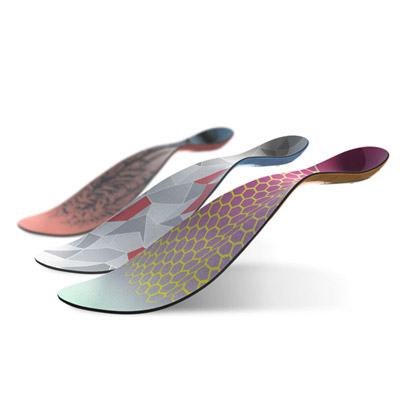
Where does this leave us?
After looking at these examples, there appears to be a recurring theme. The cost of owning a 3D printer along with the associated materials costs enable organizations to customize their products on a personal level at an affordable price. 3D printing is a flexible technology that can be adapted into various industries to realize its benefits, in terms of reducing cost, streamlining processes, driving innovation, and helping people out in their daily lives.
As more 3D printing process patents expire and 3D printing improves and evolves by providing even better technology at a lowered price, we hope to see more and more businesses benefiting from the use of 3D printing.



Great article on 3D Printing. Nice work